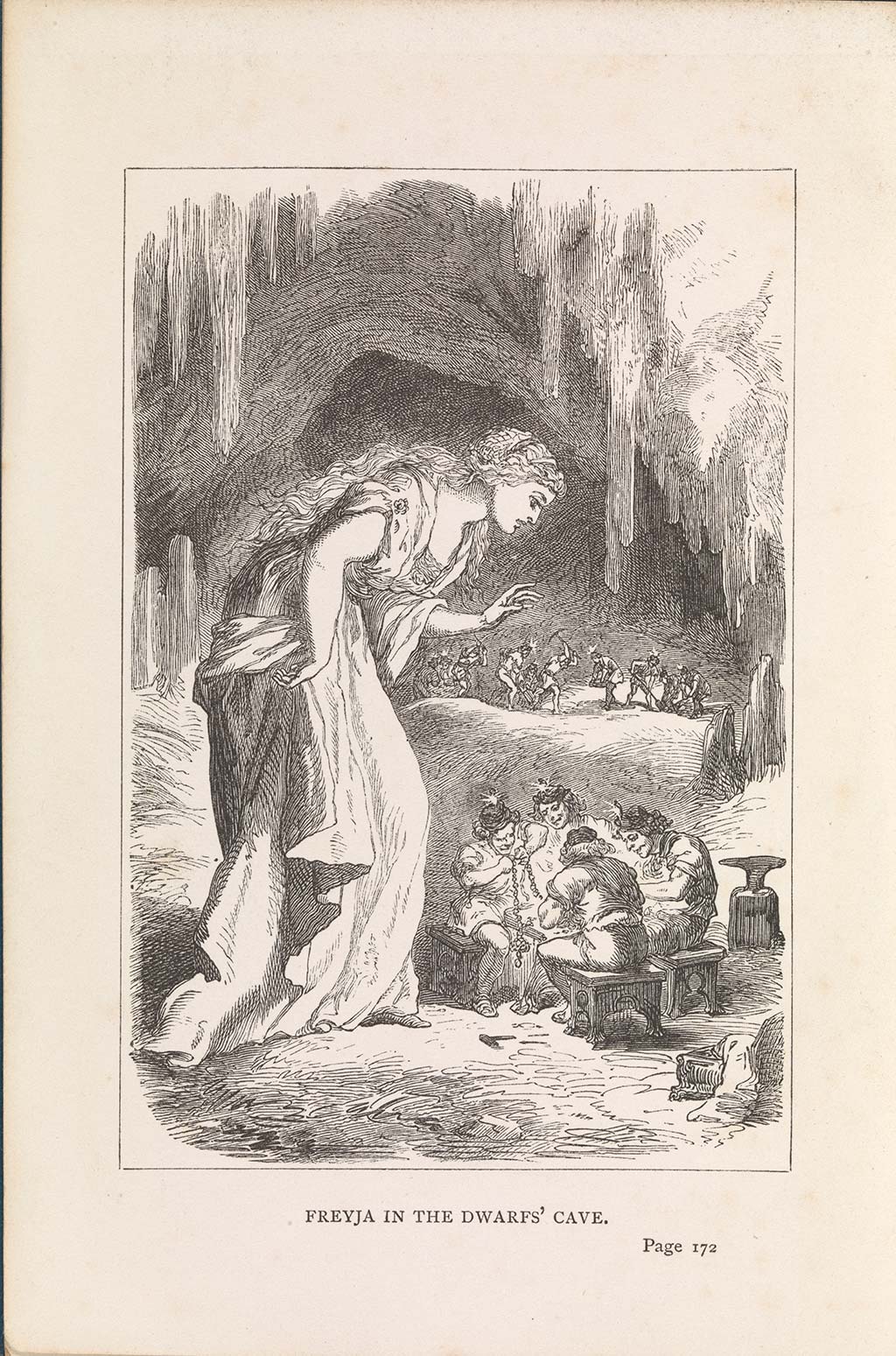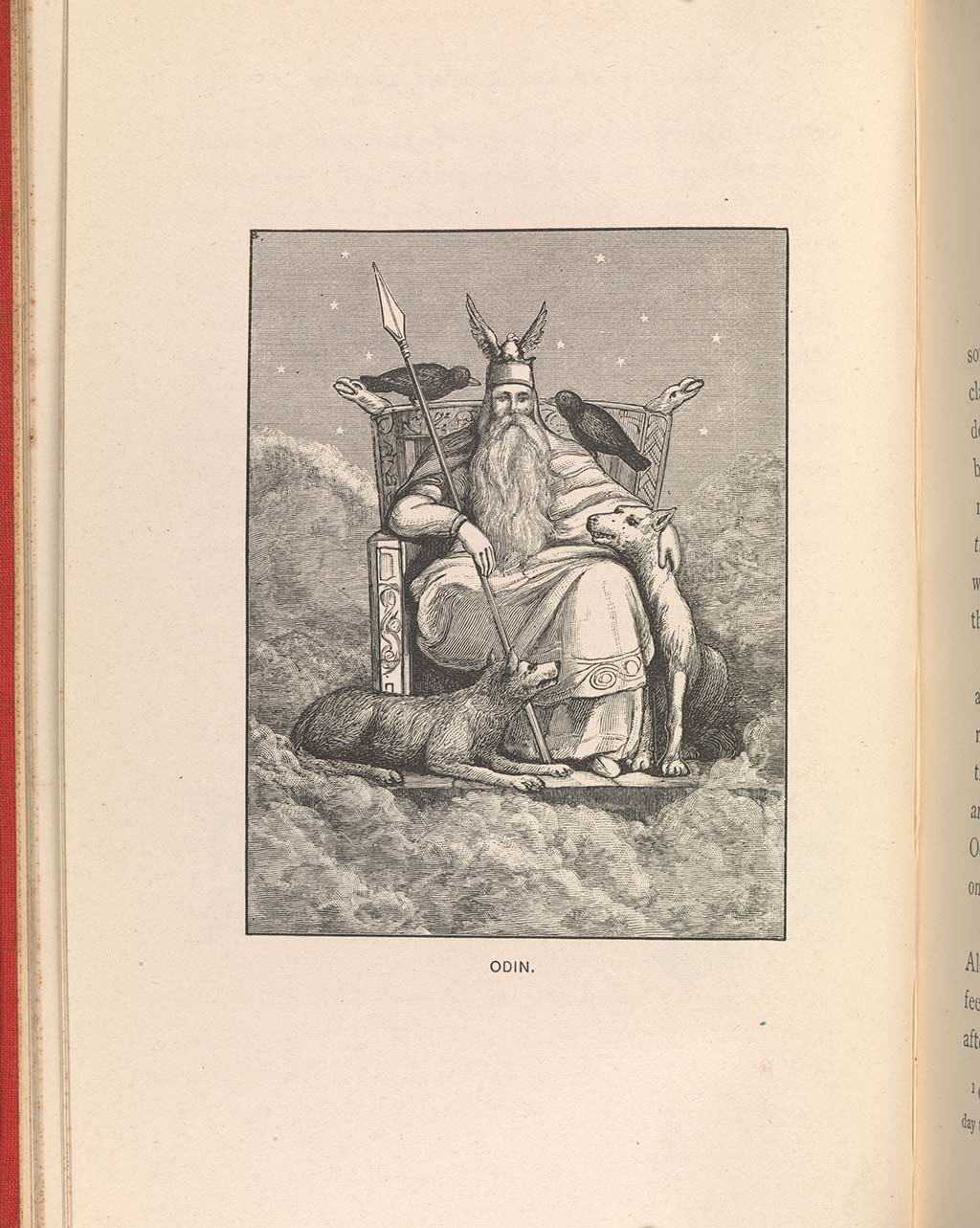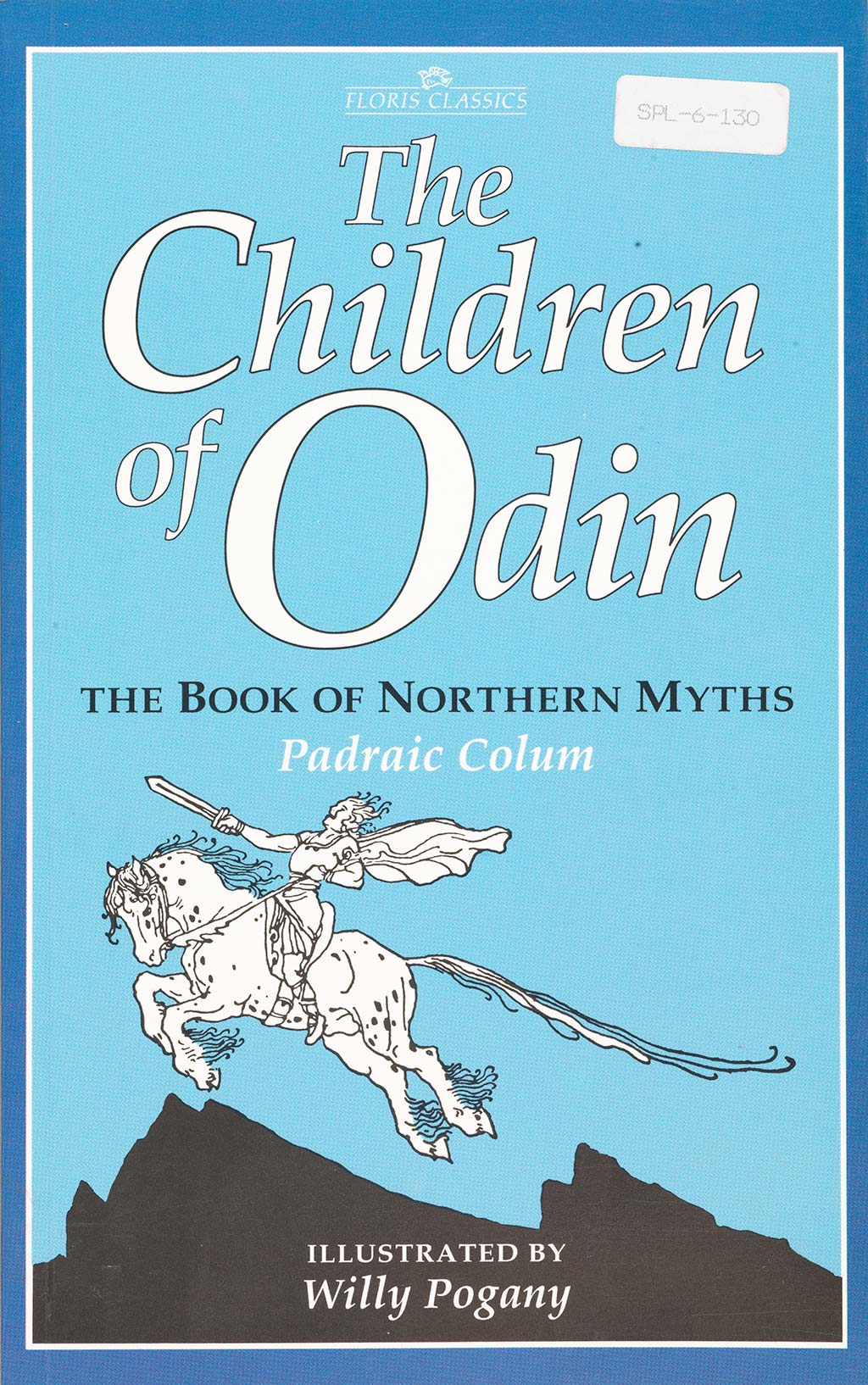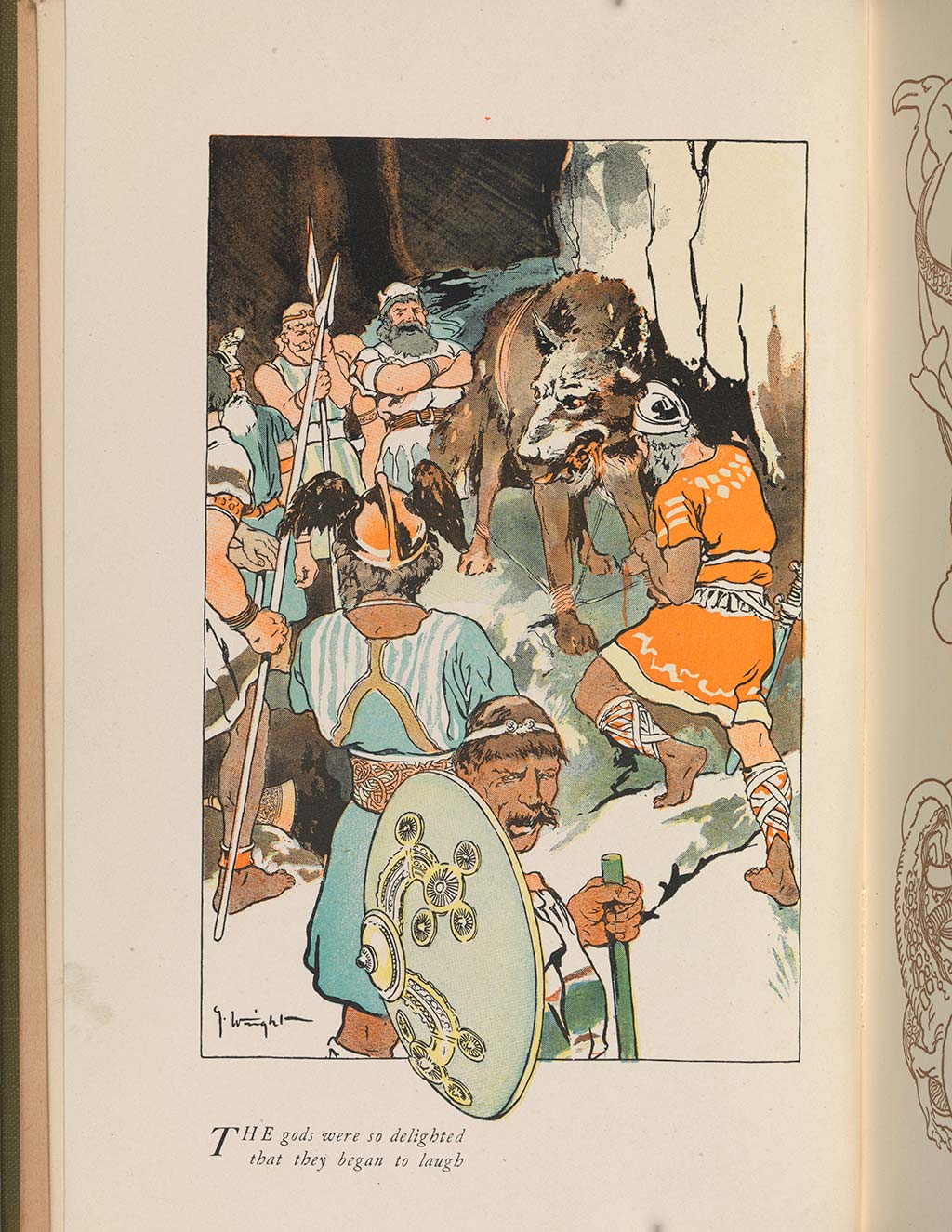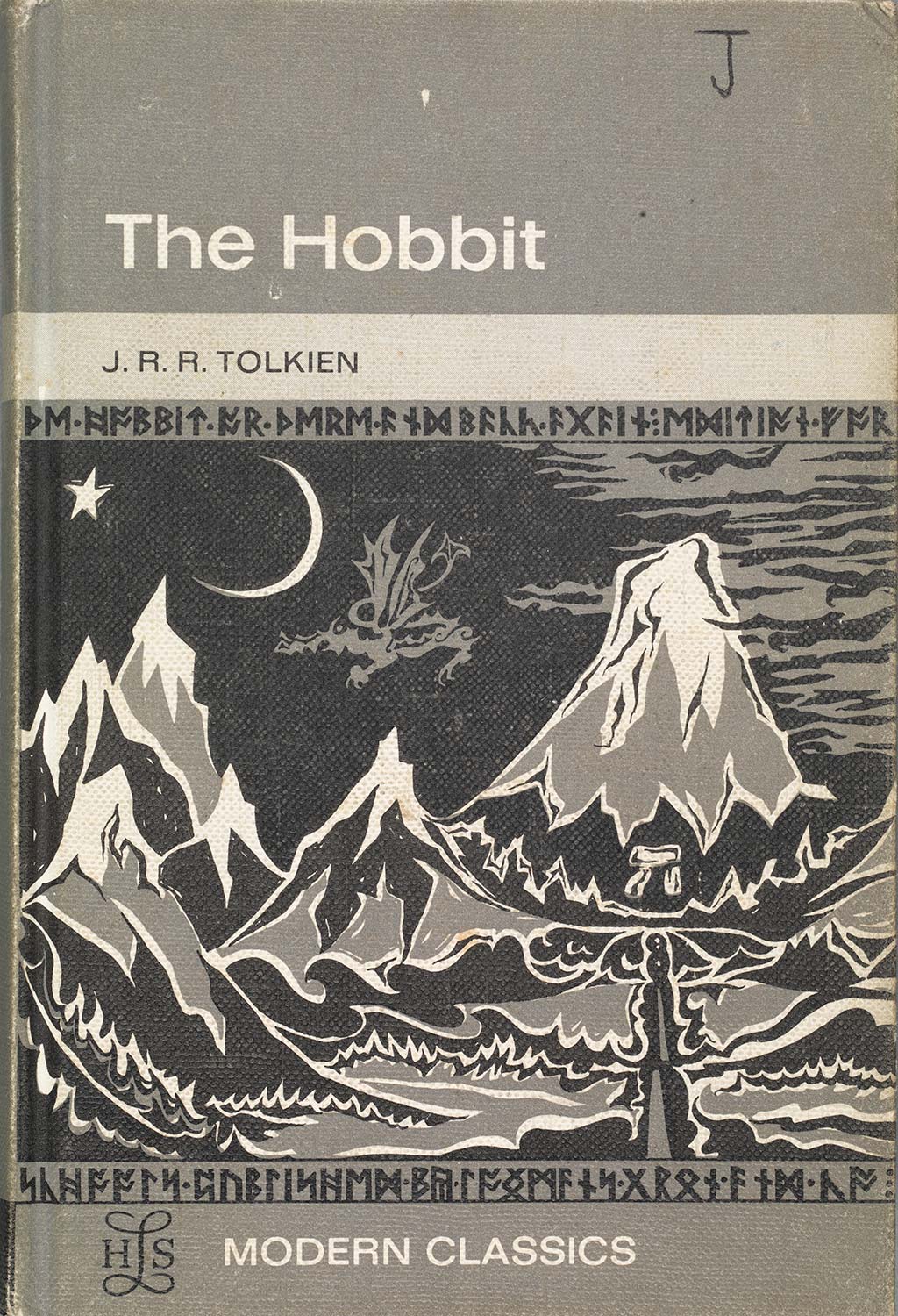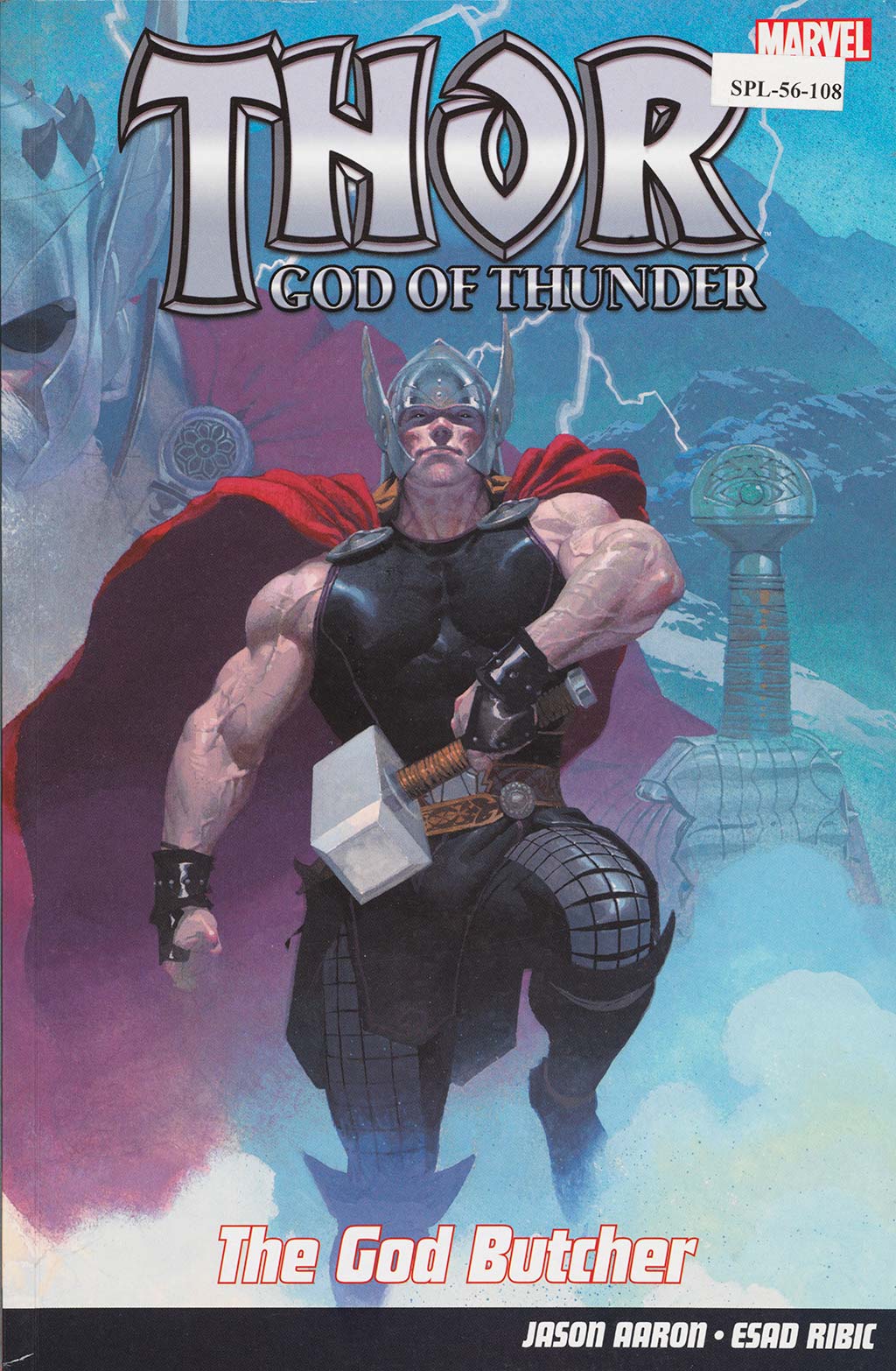Norse Myths
Our current understanding of Norse mythology comes from two important 13th-century Icelandic texts: Poetic Edda and Prose Edda. The translation of these texts in the late 18th century led to the creation of the first versions for children in the 19th century. Greek and Norse myths had become standard reading in schools by the 1920s, but, significantly, it was Norse and Arthurian myths that had a major influence on the development of children’s literature.
The foundation of Norse creation mythology lies in the story of Ymir, the frost giant, who was later killed by the gods Odin, Vili, and Ve, and whose body was used to create the world. From a fallen ash tree the gods created a man (Ask), and from a fallen elm, a woman (Embla), who became the parents of the human race. These Scandinavian tales engage with complex ideas of creation, death and renewal, presenting the reader with nine worlds inhabited by strange and awesome beings: from the trickster Loki, to the hammer-wielding Thor, to the powerful goddess Freyja, to elves, giants, dwarves and valkyries.
Annie Keary and Eliza Keary
Illustrated by Louis Huard
The heroes of Asgard: tales from Scandinavian mythology
London, 1883
OLS POL 2004
The image shows the goddess Freyja, who is the owner of Brisingamen, a necklace she finds in the dwarves’ cave.
Born in England, Annie Keary (1825-1879) and Eliza Keary (1827-1915) were daughters of Irish clergyman William Keary and Englishwoman Lucy Plumer. Originally published in 1857, their Heroes of Asgard was one of the first retellings of Norse myths specifically for children, with subsequent editions featuring many revisions.
Louis Huard (1813-1874) was a French illustrator who spent many years working in London.
Mary E. Litchfield
The nine worlds: stories from Norse mythology
Boston & London, 1890
Gall.20.s.125
One-eyed Odin is often depicted as the father of the Norse gods who, with his wife Frigg, rules Asgard, one of the nine worlds of Norse mythology. ‘Wednesday’ comes from ‘Odin’s Day’, and ‘Friday’ from ‘Frigg’s Day’.
Litchfield was inspired by the writings of Annie and Eliza Keary, but also wanted to build upon and develop their tales; in her rewritings, this section on Odin is mostly the author’s own creation.
Padraic Colum
Illustrated by Willy Pogány
The children of Odin: the book of northern myths
Edinburgh, 1993
SPL-6-130
This volume retells many of the major stories of Northern myths, from the tree of Yggdrassil, to the adventures of the two races of gods (the Aesir and the Vanir), to Iduna and her apples of immortality, to Thor and Loki, to Ragnarök and the twilight of the gods.
Padraic Colum (1881-1972) was an Irish poet, novelist, dramatist, children’s author, and collector of folklore, and was heavily involved in the Irish Revival. He is famous for his numerous retellings of myths from around the world, and for writing most of the words for the song ‘She moved through the fair’.
Born in Hungary, Willy Pogány (1882-1955) was a prolific illustrator best known for his pen and ink drawings.
Cover reproduced by permission of Floris Books.
Hamilton Wright Mabie
Illustrated by George Wright
Norse stories retold from the Eddas
London, 1902
53.r.5
Norse tales present us with many mysterious beasts and creatures. The trickster Loki is father to the serpent Jörmungandr and the wolf Fenrer. It was foretold that Fenrer would kill Odin, so he was bound using Gleipnir, a ribbon constructed by the dwarves out of 6 mythical ingredients.
Hamilton Wright Mabie (1846-1916) was writing at a time when Richard Wagner’s Ring Cycle had popularised many of these Northern tales.
J.R.R. Tolkien
The hobbit
London, 1966
J 4362
Born in South Africa, John Ronald Reuel Tolkien (1892-1973) became Professor of Anglo-Saxon literature at Oxford University. The hobbit (1937) was written specifically for children and draws directly from Norse mythology. For example, the names of the dwarves who arrive at Bilbo’s house can be found in the Poetic Edda. As can be seen in the works of well-known authors J.R.R. Tolkien, Alan Garner, Dorothy Hosford, Roger Lancelyn Green, Barbara Picard, and others, Norse myths greatly influenced the development of literature for children in the middle and latter part of the 20th century.
Cover reproduced by permission of HarperCollins Publishers Ltd.
©1937 The J.R.R. Tolkien Estate Limited
Jason Aaron
Artist: Esad Ribic
Thor: God of Thunder
London, 2013
SPL-56-108
The hero Thor, god of thunder and son of Odin, features prominently in Norse mythology and is best known for wielding his hammer, mjölnir. ‘Thursday’ comes from ‘Thor’s Day’.
Contemporary retellings of Thor’s stories take many forms and can be found in comic books as well as films. In Marvel Comics’ recent version, Thor is female.

